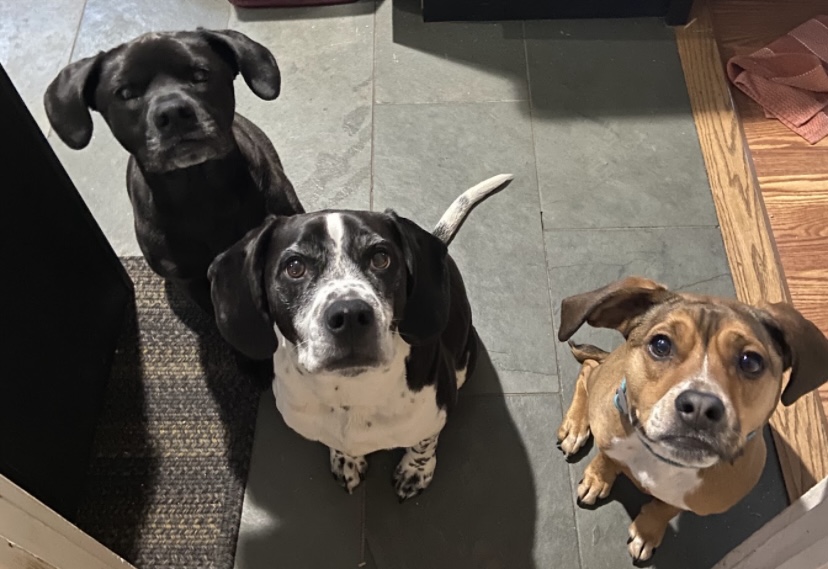In the McDonough laboratory, we are investigating how organic contaminants impact aquatic ecosystems and human health by combining innovative environmental chemistry and bioanalytical techniques, state-of-the-art mass spectrometry, and field monitoring campaigns. Our work protects the public from exposure to harmful pollutants and draws attention to the global ubiquity of organic contaminants.

Research Talks
Current Research Projects
Bioaccumulation-Directed Prioritization of Ionizable Organic Contaminants
With this work, our objective is to develop “virtual organisms” to rapidly isolate and concentrate mixtures of known and unknown organic contaminants in a manner representative of accumulation in biota. These strategies will facilitate rapid identification and risk-based prioritization of ionizable synthetic organic chemicals from complex chronic exposures.
To date, much of our work in this arena has focused on analyzing tissues and fluids collected after dosing mice with field-collected aqueous film-forming foam containing hundreds of known and unknown per/polyfluoroalkyl substances (PFASs). The figure below (from McDonough et al., ES&T 2020) highlights a series of bis-perfluoroalkyl sulfonimides tentatively identified in the serum of AFFF-dosed mice though they were not detected in the original dosing mixture, suggesting that these previously overlooked chemicals are highly bioaccumulative.
Currently we are delving into in vitro techniques to further probe the processes occurring in the body and applying these ideas to a broader range of questions, including consideration of other ionizable organic contaminants besides PFASs and prioritization techniques in highly complex contaminated aquatic environments (SERDP Project ER22-4003).

Related Publications
Dukes, D. A.; McDonough, C. A. 2024. N-glucuronidation and excretion of perfluoroalkyl sulfonamides in mice following ingestion of aqueous film-forming foam. Environmental Toxicology & Chemistry, e00224. DOI: 10.1002/etc.5939
McDonough, C. A.; Scott, W. 2023. Tackling PFAS complexity with HRMS and Bioanalytical Techniques. LCGC Supplements: Hot Topics in PFAS, 41(s9), 12-16. DOI: 10.56530/lcgc.na.nr4267c9
McDonough, C. A., Choyke, S., Ferguson, P. L., DeWitt, J. C., Higgins, C. P. 2020. Bioaccumulation of novel per- and polyfluoroalkyl substances in mice dosed with an aqueous film-forming foam. Environ. Sci. Technol., 54, 5700-5709. DOI: 10.1021/acs.est.0c00234.
Widening the Lens on Organofluorine in Human Serum
Pre-PFAAs are PFASs that can potentially degrade to form highly persistent perfluoroalkyl acids (PFCAs and PFSAs) as their final product (McDonough et al., ES&T, 2022). Their bioavailability, toxicokinetics, and toxicology have not been studied extensively. The OECD has classified the majority of PFASs (4,186 out of 4,730 PFAS-related CAS numbers) as “potential precursors to PFAAs.” Pre-PFAAs make up a significant portion of historical and modern AFFFs. They are also used in a wide variety of consumer and industrial products encountered by the general public. We are working to measure much needed distribution coefficients and gather information on biological transformation rates and transformation products for these precursors.
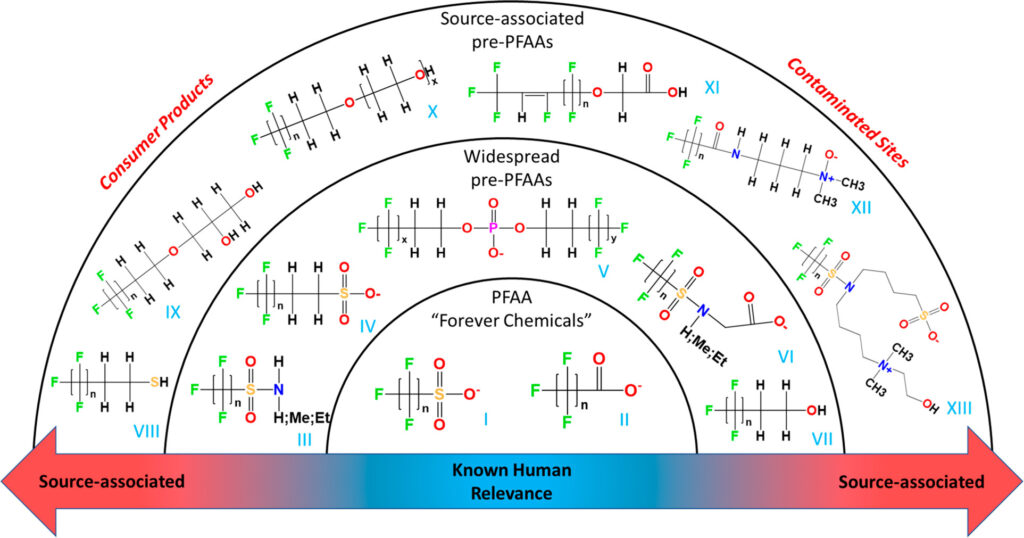
We are also widening the lens on unidentified organofluorine by developing and optimizing new workflows for human biomonitoring. This includes ongoing work to develop improved methods to measure short-chain PFASs in human urine (funded by CDC NIOSH) and HRMS strategies to identify novel PFASs in human blood.
Related Publications
Perera, D.; Scott, W.; Smolinski, R.; Mukhopadhyay, L.; McDonough, C. A. Techniques to characterize PFAS burden in biological samples: Recent insights and remaining challenges. Trends in Environmental Analytical Chemistry, 2024, 41, e00224. DOI: 10.1016/j.teac.2023.e00224
McDonough, C. A.; Li, W.; Bischel, H. N.; De Silva, A. O.; DeWitt, J. C. Widening the lens on PFASs: Direct human exposure to perfluoroalkyl acid precursors (pre-PFAAs). ES&T, 2022, 56(10), 6004-6013. DOI: 10.1021/acs.est.2c00254
McDonough, C. A.; Choyke, S.; Barton, K. E.; Mass, S.; Starling, A. P.; Adgate, J. L.; Higgins, C. P. Unsaturated PFOS and other PFASs in human serum and drinking water from an AFFF-impacted community. ES&T. 2021, 55(12), 8139-8148. DOI: 10.1021/acs.est.1c00522
Barton, K.; Starling, A.; Higgins, C. P.; McDonough, C. A.; Calafat, A.; Adgate, J. Sociodemographic and behavioral determinants of serum concentrations of per- and polyfluoroalkyl substances in a community highly exposed to aqueous film-forming foam contaminants in drinking water. Int. J. Hyg. Environ. Health. 2020, 223(1), 256-266. DOI: 10.1016/j.ijheh.2019.07.012
PFASs in Benthic Biota Exposed to Impacted Marine Sediments (SERDP ER22-4003)
PFAS contamination in marine sediments poses significant risks to benthic organisms and trophic transfer within coastal ecosystems. This issue is particularly pronounced at sites impacted by aqueous film-forming foams (AFFF), where PFASs exist as complex mixtures. Our research aims to address critical knowledge gaps by: 1. Investigating how key variables—sediment characteristics, PFAS molecular structure, and mixture complexity—affect PFAS bioavailability, uptake, and bioaccumulation in major benthic organisms (e.g., worms, clams, fish, and crabs). 2. Assessing the role of diet as a pathway for PFAS exposure in benthic consumers. 3. Determining the relative toxicity of individual PFASs and PFAS mixtures on the survival and development of larval-stage benthic species.
To achieve these objectives, we are conducting laboratory-controlled exposure experiments using both laboratory-spiked and field-collected marine sediments with varying PFAS mixture complexity. Preliminary findings suggest that HLB solid-phase microextraction (SPME) blades show significant potential for monitoring bioavailable PFAS concentrations in complex environmental matrices. Additionally, we have observed that PFAS potency varies with chain length and functional groups across multiple ecological endpoints. Our ongoing research focuses on further exploring the mechanisms of adsorption and the utility of SPME for measuring bioavailability, aiming to advance our understanding of PFAS behavior at sediment-biology interfaces.

Past Projects
Depth profiles of Organophosphate Flame Retardants in the Remote Ocean
Passive sampling to Understand Contaminant Dynamics in the Great Lakes
Spatial distribution and air–water exchange of organic flame retardants in the Lower Great Lakes

Significance of Population Centers As Sources of Gaseous and Dissolved PAHs in the Lower Great Lakes
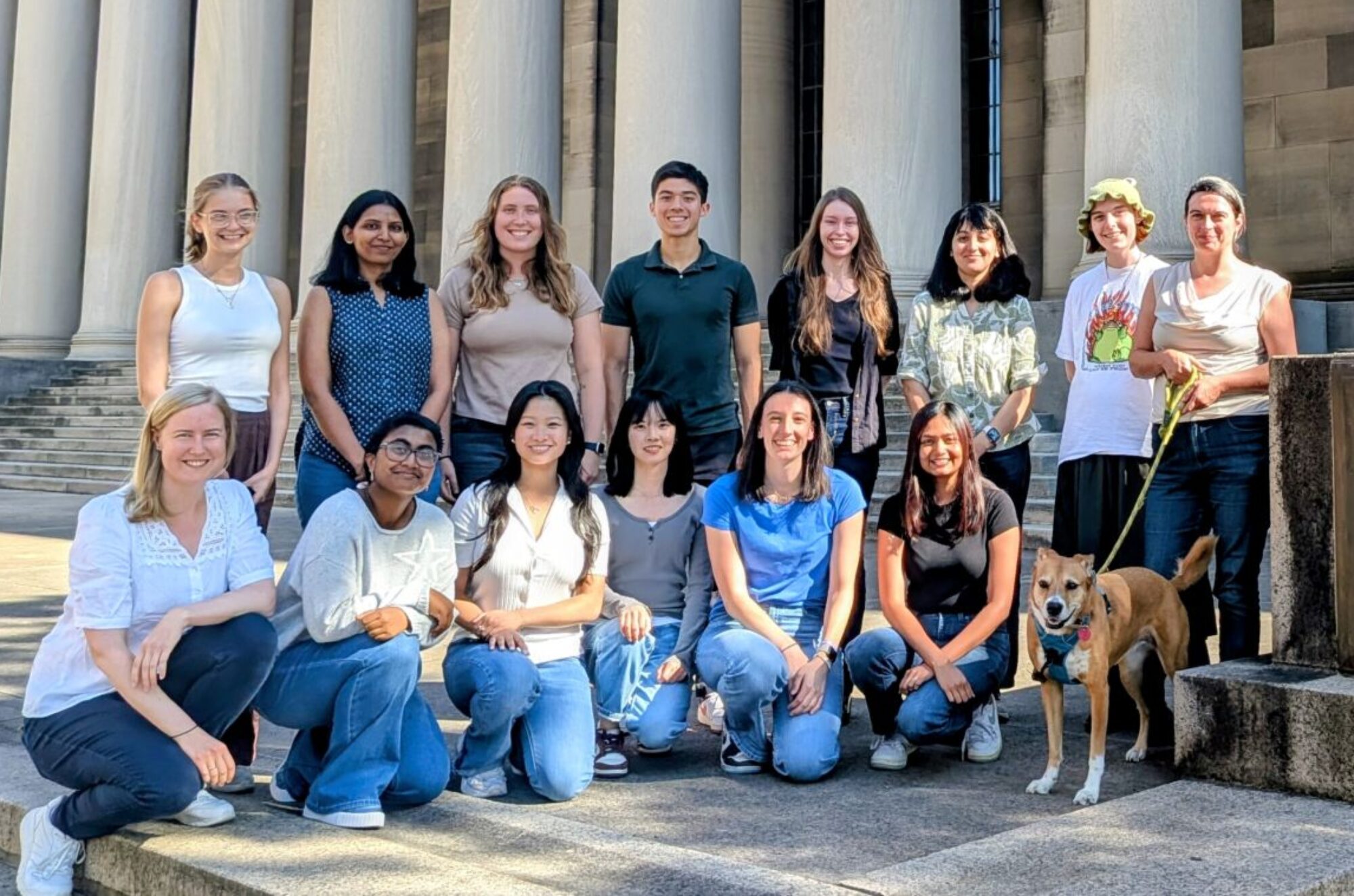
 Dissolved organophosphate esters and polybrominated diphenyl ethers in remote marine environments: Arctic surface water distributions and net transport through Fram Strait
Dissolved organophosphate esters and polybrominated diphenyl ethers in remote marine environments: Arctic surface water distributions and net transport through Fram Strait



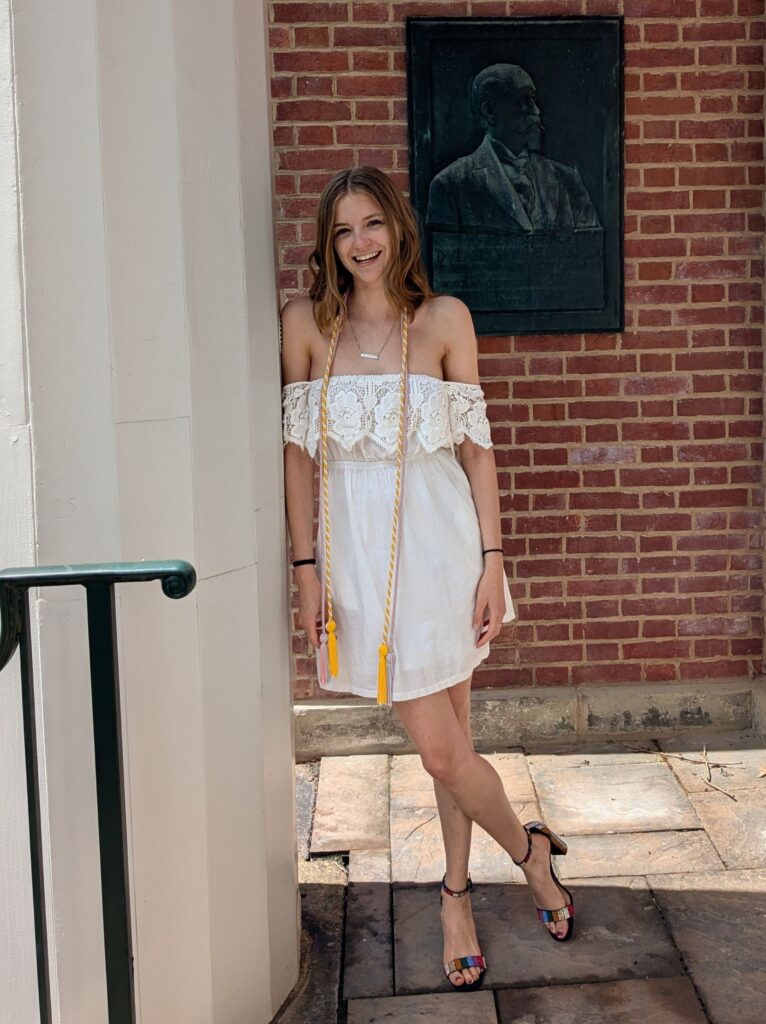 I am a first year Ph.D student at Carnegie Mellon University in the Department of Chemistry as well as a Carnegie Mellon Rales Fellow. As an undergraduate at Allegheny College, I majored in chemistry and minored in studio art. I am interested in the transformations and exposure pathways of organic contaminants and per/polyfluoroalkyl substances (PFAS’s) in the environment — particularly in water systems. Outside of the lab I enjoy being on my paddleboard, reading, or babbling about art.
I am a first year Ph.D student at Carnegie Mellon University in the Department of Chemistry as well as a Carnegie Mellon Rales Fellow. As an undergraduate at Allegheny College, I majored in chemistry and minored in studio art. I am interested in the transformations and exposure pathways of organic contaminants and per/polyfluoroalkyl substances (PFAS’s) in the environment — particularly in water systems. Outside of the lab I enjoy being on my paddleboard, reading, or babbling about art.  I am currently a second year PhD student in the Chemistry Department at Carnegie Mellon University. In my undergraduate research, I focused on establishing a method to determine the pKa of per- and polyfluoroalkyl substances (PFAS) which began my interest in these contaminants. My current research involves measuring neutral volatile PFAS in personal care products and understanding the dermal exposure in people. Outside of the lab, I enjoy hiking, trying new restaurants, reading, golfing, and volleyball!
I am currently a second year PhD student in the Chemistry Department at Carnegie Mellon University. In my undergraduate research, I focused on establishing a method to determine the pKa of per- and polyfluoroalkyl substances (PFAS) which began my interest in these contaminants. My current research involves measuring neutral volatile PFAS in personal care products and understanding the dermal exposure in people. Outside of the lab, I enjoy hiking, trying new restaurants, reading, golfing, and volleyball!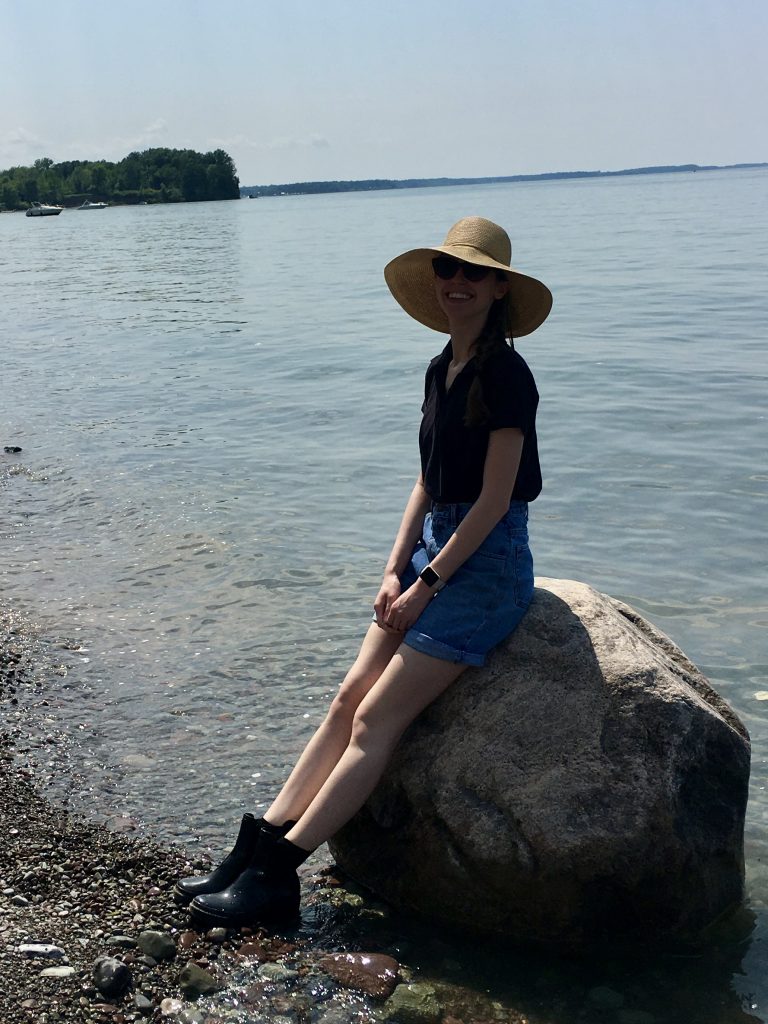 I am a new Ph.D. student in the Department of Chemistry at Carnegie Mellon University. As an undergraduate, I studied both chemistry and chemical biology, and my research focused on the effects of the environment on archaeological samples. I’m looking forward to transferring those lab skills to studying the effects of per/polyfluoroalkyl substances (PFAS) on the environment and biological systems. When I’m not in the lab, I enjoy horseback riding, reading, and hiking!
I am a new Ph.D. student in the Department of Chemistry at Carnegie Mellon University. As an undergraduate, I studied both chemistry and chemical biology, and my research focused on the effects of the environment on archaeological samples. I’m looking forward to transferring those lab skills to studying the effects of per/polyfluoroalkyl substances (PFAS) on the environment and biological systems. When I’m not in the lab, I enjoy horseback riding, reading, and hiking! I am currently a first year Ph.D. student in the Chemistry Department at Carnegie Mellon University. I have a background in Environmental Science (Siena College, B.S.) and am interested in the fate of organic contaminants in the environment. I am particularly interested in the bioaccumulation of per/polyfluoroalkyl substances (PFASs) throughout aquatic food webs and aquatic ecosystems. Outside of the lab, I enjoy reading, embroidery and spending time outside!
I am currently a first year Ph.D. student in the Chemistry Department at Carnegie Mellon University. I have a background in Environmental Science (Siena College, B.S.) and am interested in the fate of organic contaminants in the environment. I am particularly interested in the bioaccumulation of per/polyfluoroalkyl substances (PFASs) throughout aquatic food webs and aquatic ecosystems. Outside of the lab, I enjoy reading, embroidery and spending time outside!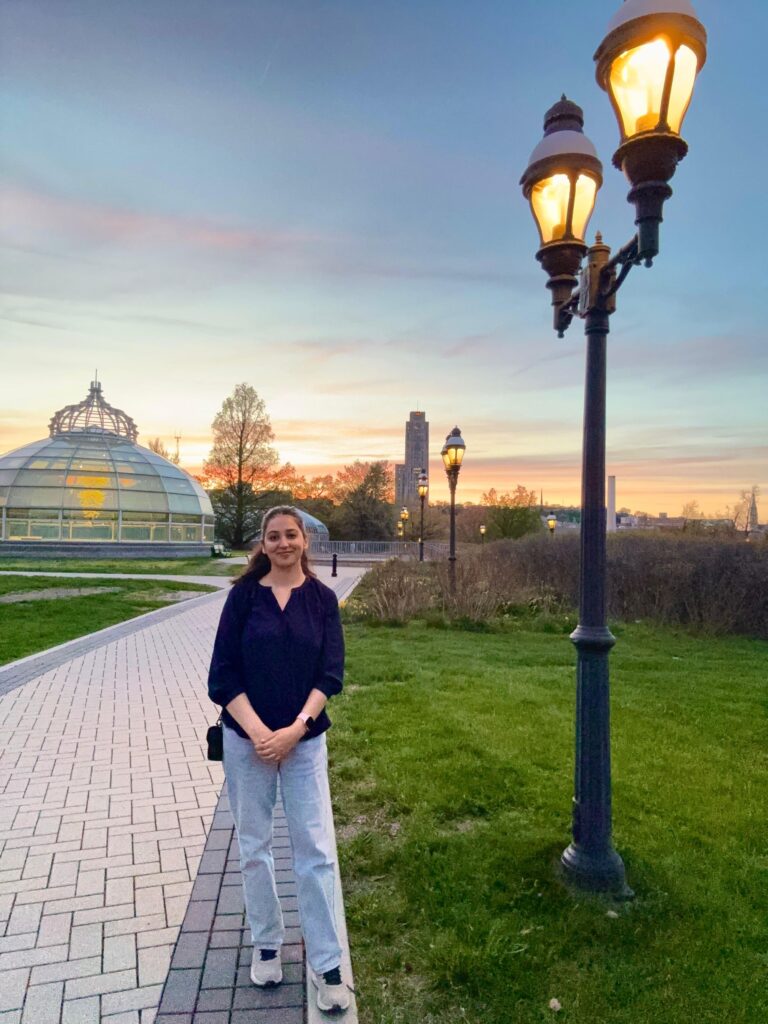 I’m a third-year PhD student in the Department of Chemistry at Carnegie Mellon University, specializing in Environmental Analytical Chemistry. My current research focuses on developing LC-HRMS methods to analyze PFAS in human urine samples, and I am particularly interested in learning more about how these compounds move through the human body.
I’m a third-year PhD student in the Department of Chemistry at Carnegie Mellon University, specializing in Environmental Analytical Chemistry. My current research focuses on developing LC-HRMS methods to analyze PFAS in human urine samples, and I am particularly interested in learning more about how these compounds move through the human body. I am an environmental analytical chemist from India and currently a fourth-year Ph.D. student. My research focuses on understanding the bioavailability and bioaccumulation of per- and polyfluoroalkyl substances (PFAS) in aquatic environments. To gain a comprehensive understanding of PFAS behavior, I employ a two-pronged approach: (1) analyzing fish bioarchives from the Hudson River to investigate temporal trends in PFAS contamination, and (2) applying ex-situ passive sampling techniques to directly measure the chemical activities of sediment-associated PFASs. I am interested in pursuing a career in environmental risk assessment and policy decisions, and hope to contribute to future efforts through my research. Outside the lab, I enjoy playing badminton and volleyball, reading, hiking, and spending time with my dog, Rocket!
I am an environmental analytical chemist from India and currently a fourth-year Ph.D. student. My research focuses on understanding the bioavailability and bioaccumulation of per- and polyfluoroalkyl substances (PFAS) in aquatic environments. To gain a comprehensive understanding of PFAS behavior, I employ a two-pronged approach: (1) analyzing fish bioarchives from the Hudson River to investigate temporal trends in PFAS contamination, and (2) applying ex-situ passive sampling techniques to directly measure the chemical activities of sediment-associated PFASs. I am interested in pursuing a career in environmental risk assessment and policy decisions, and hope to contribute to future efforts through my research. Outside the lab, I enjoy playing badminton and volleyball, reading, hiking, and spending time with my dog, Rocket! I am a senior undergraduate student pursuing a B.S. in Chemistry with a Biological Track. I previously collaborated with Dr. Raj Mukhopadhyay to develop novel bio-adsorbents for the remediation of PFAS in plant and soil. The largest project involved growing and maintaining over 30 lettuce samples grown in PFAS-spiked soil to assess the performance of engineered clay adsorbents. I am currently working towards an honors thesis focusing on developing plant proxies to assess PFAS exposure. Outside of the lab, I enjoy playing lacrosse and am the president of the Carnegie Mellon Men’s Lacrosse club.
I am a senior undergraduate student pursuing a B.S. in Chemistry with a Biological Track. I previously collaborated with Dr. Raj Mukhopadhyay to develop novel bio-adsorbents for the remediation of PFAS in plant and soil. The largest project involved growing and maintaining over 30 lettuce samples grown in PFAS-spiked soil to assess the performance of engineered clay adsorbents. I am currently working towards an honors thesis focusing on developing plant proxies to assess PFAS exposure. Outside of the lab, I enjoy playing lacrosse and am the president of the Carnegie Mellon Men’s Lacrosse club. I am a third-year undergraduate double-majoring in Environmental Engineering and Chemistry at Carnegie Mellon University. I am currently studying bio uptake of PFAS and working with Leenia and Natalie on the SERDP project in the lab. I am interested in how exposure to environmental contaminants such as PFAS affects environmental and public health. Outside of the lab, I love to bake, resin cast, canoe, and run!
I am a third-year undergraduate double-majoring in Environmental Engineering and Chemistry at Carnegie Mellon University. I am currently studying bio uptake of PFAS and working with Leenia and Natalie on the SERDP project in the lab. I am interested in how exposure to environmental contaminants such as PFAS affects environmental and public health. Outside of the lab, I love to bake, resin cast, canoe, and run!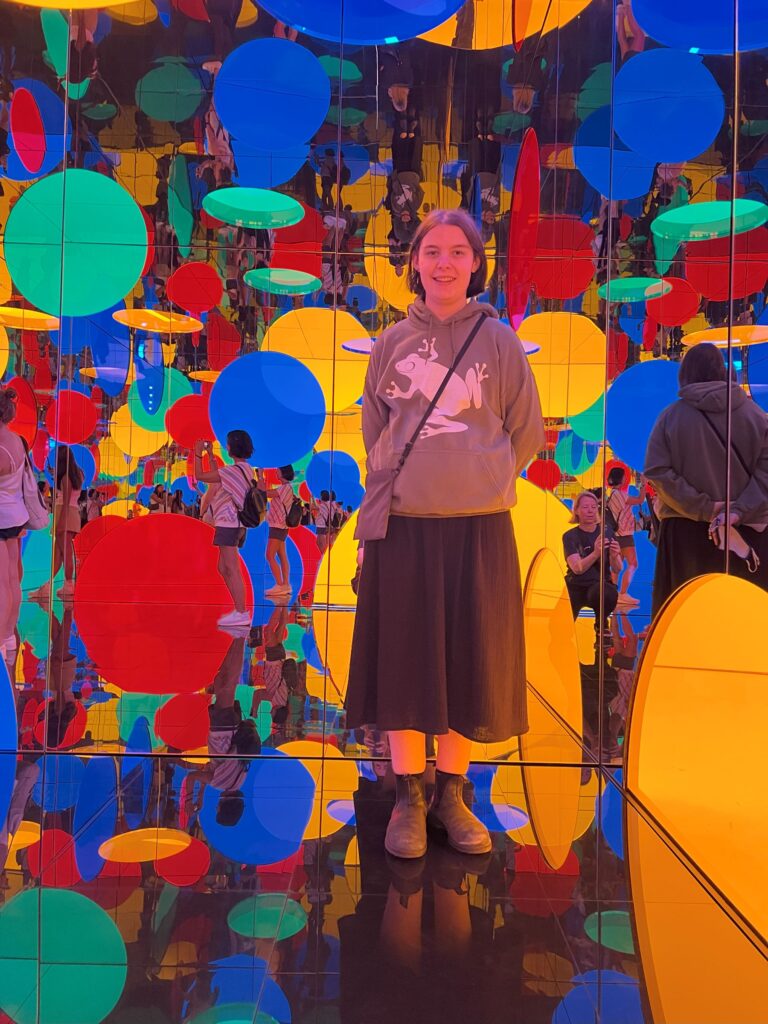 I am currently a sophomore chemistry major working under Yanan in the lab, focusing on the bioaccumulation of PFAS in the tissues of marine organisms. Outside of academics, I enjoy crocheting, singing, drawing, and going down Wikipedia rabbit holes about frogs.
I am currently a sophomore chemistry major working under Yanan in the lab, focusing on the bioaccumulation of PFAS in the tissues of marine organisms. Outside of academics, I enjoy crocheting, singing, drawing, and going down Wikipedia rabbit holes about frogs.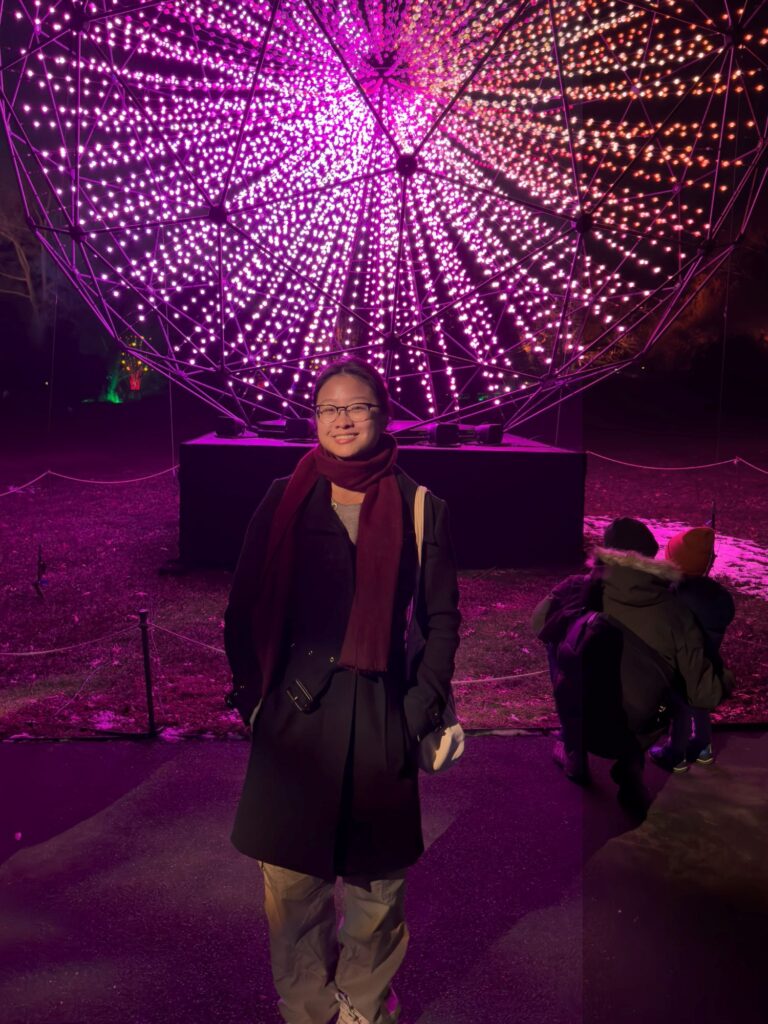 I am a senior undergraduate pursuing a B.S in Chemistry with a minor in Biomedical Engineering. I have been working with Dilani throughout my college career to develop methods utilizing high-resolution mass spectrometry to quantify PFAS in biological matrices. I am particularly interested in understanding the mechanisms behind PFAS bioaccumulation in human blood, and how this may affect human health. Some of my other hobbies include cooking, swimming, and taking many photos of my cat!
I am a senior undergraduate pursuing a B.S in Chemistry with a minor in Biomedical Engineering. I have been working with Dilani throughout my college career to develop methods utilizing high-resolution mass spectrometry to quantify PFAS in biological matrices. I am particularly interested in understanding the mechanisms behind PFAS bioaccumulation in human blood, and how this may affect human health. Some of my other hobbies include cooking, swimming, and taking many photos of my cat! I am a visiting researcher from the Norwegian University of Life Sciences, supported by a Fulbright scholarship. My PhD focuses on the treatment of water contaminated with per- and polyfluoroalkyl substances (PFAS), with particular emphasis on ultrashort- and short‑chain compounds. For my master’s thesis in 2017, I studied the behavior of perfluorooctanesulfonic acid (PFOS) in the groundwater fluctuation zone. Before returning to academia, I worked for several years as a hydrogeologist and environmental consultant. Through my research, I aim to advance understanding of PFAS management and help build a safer and cleaner environment.
I am a visiting researcher from the Norwegian University of Life Sciences, supported by a Fulbright scholarship. My PhD focuses on the treatment of water contaminated with per- and polyfluoroalkyl substances (PFAS), with particular emphasis on ultrashort- and short‑chain compounds. For my master’s thesis in 2017, I studied the behavior of perfluorooctanesulfonic acid (PFOS) in the groundwater fluctuation zone. Before returning to academia, I worked for several years as a hydrogeologist and environmental consultant. Through my research, I aim to advance understanding of PFAS management and help build a safer and cleaner environment. Yanan received her M.S. and Ph.D. degrees in Environmental Engineering from Fudan University, China. She also completed an 18-month joint-Ph.D. training program at Aalborg University, Denmark. Her research focuses on the environmental fate, risks, and degradation mechanisms of emerging environmental micropollutants, including DBPs, PPCPs, and microplastics.
Yanan received her M.S. and Ph.D. degrees in Environmental Engineering from Fudan University, China. She also completed an 18-month joint-Ph.D. training program at Aalborg University, Denmark. Her research focuses on the environmental fate, risks, and degradation mechanisms of emerging environmental micropollutants, including DBPs, PPCPs, and microplastics.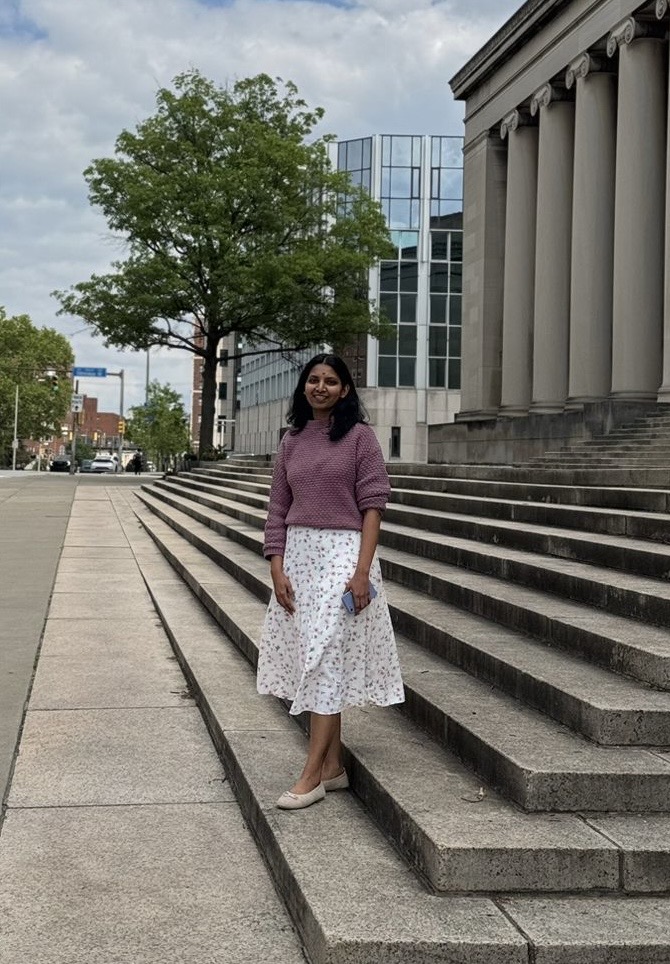 Dilani received her B.S. degree (with honors) in Chemistry from the University of Colombo, Sri Lanka, and her M.S. and Ph.D. degrees in Chemistry from the Florida International University. She joined the McDonough lab in 2023 as a postdoctoral scientist. Dilani’s previous work focused on developing a novel method to remediate per- and polyfluoroalkyl substances (PFASs) in biological systems. Her current work at the McDonough lab focuses on developing high-resolution mass spectrometry method for targeted and non-targeted screening of PFASs in biological matrices including. Outside the lab, Dilani spends time with her two kids Sahansa and Vidvaan.
Dilani received her B.S. degree (with honors) in Chemistry from the University of Colombo, Sri Lanka, and her M.S. and Ph.D. degrees in Chemistry from the Florida International University. She joined the McDonough lab in 2023 as a postdoctoral scientist. Dilani’s previous work focused on developing a novel method to remediate per- and polyfluoroalkyl substances (PFASs) in biological systems. Her current work at the McDonough lab focuses on developing high-resolution mass spectrometry method for targeted and non-targeted screening of PFASs in biological matrices including. Outside the lab, Dilani spends time with her two kids Sahansa and Vidvaan. I am a chemical oceanographer and analytical chemist working at the intersection of environmental analytical chemistry, environmental health engineering, and toxicology. I received my B.Sc. in Chemistry from the Massachusetts Institute of Technology (MIT) in 2008, and my Ph.D. in Chemical Oceanography from the University of Rhode Island Graduate School of Oceanography (URI GSO) in 2017. I completed a postdoctoral fellowship at Colorado School of Mines developing methods for nontarget analysis of per/polyfluoroalkyl substances (PFASs) in biological samples. I use cutting-edge environmental monitoring and analytical chemistry techniques to study the fate, transport, and biological effects of anthropogenic organic contaminants in aquatic environments. Broadly, I am interested in how the molecular structure and chemical properties of pollutants influence their fate in the environment, as well as their biological effects in aquatic organisms and humans. My overarching objective is to understand human and ecosystem health risk associated with organic contaminants in water and to identify particular compounds of concern that should be prioritized for remediation and toxicological investigation. When I’m not working, I am usually brewing beer and hanging out with my dogs, Millie (pictured here) and Pickles.
I am a chemical oceanographer and analytical chemist working at the intersection of environmental analytical chemistry, environmental health engineering, and toxicology. I received my B.Sc. in Chemistry from the Massachusetts Institute of Technology (MIT) in 2008, and my Ph.D. in Chemical Oceanography from the University of Rhode Island Graduate School of Oceanography (URI GSO) in 2017. I completed a postdoctoral fellowship at Colorado School of Mines developing methods for nontarget analysis of per/polyfluoroalkyl substances (PFASs) in biological samples. I use cutting-edge environmental monitoring and analytical chemistry techniques to study the fate, transport, and biological effects of anthropogenic organic contaminants in aquatic environments. Broadly, I am interested in how the molecular structure and chemical properties of pollutants influence their fate in the environment, as well as their biological effects in aquatic organisms and humans. My overarching objective is to understand human and ecosystem health risk associated with organic contaminants in water and to identify particular compounds of concern that should be prioritized for remediation and toxicological investigation. When I’m not working, I am usually brewing beer and hanging out with my dogs, Millie (pictured here) and Pickles.


